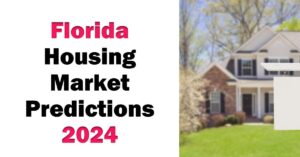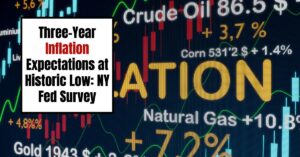Big investors are buying up single-family homes, impacting rent prices & homeownership. Is this trend is shaping the housing market? A new watchdog report from the U.S. Government Accountability Office (GAO) sheds light on the growing presence of institutional investors in the single-family rental market and the factors influencing their emergence. This article explores how the 2007-2009 financial crisis paved the way for these large-scale investors to enter the market and the factors that fueled their growth.
Capitalizing on Opportunity:
The financial crisis created a unique opportunity for institutional investors. With a surge in foreclosed homes flooding the market, local auctions offered a chance to acquire properties in bulk. This was particularly attractive due to:
- Economies of Scale: Buying large numbers of homes simultaneously allowed for more efficient management and potentially lower costs per unit.
- Pricing Power: The sheer volume of purchases gave institutional investors significant leverage in determining rental prices within specific markets.
Beyond Auctions:
Institutional investors didn't limit themselves to auctions. They also participated in initiatives like Fannie Mae's REO-to-Rental program, which offered foreclosed properties in areas heavily impacted by the crisis.
Financial Muscle:
Institutional investors had a distinct advantage when it came to financing their purchases. They possessed access to a wider range of funding sources compared to smaller investors and individual buyers. These included:
- Private Equity Funds
- Public Equity and Debt Securities
- Securitization of Rental Income
- Government-Backed Loans
A Lending Landscape in Flux:
While institutional investors enjoyed diverse funding options, the situation for traditional homebuyers was quite different. Mortgage lenders had tightened their lending standards, making it harder for many to qualify for homeownership in the aftermath of the crisis. This further tilted the playing field in favor of institutional investors who could offer cash upfront.
The Technological Edge:
Technological advancements played a crucial role in enabling institutional investors to manage large portfolios efficiently. Digital platforms streamlined property acquisition, allowing for targeted purchases based on specific investment criteria. Online portals also facilitated tenant management, enabling them to search for rentals, submit applications, and pay rent electronically.
The Impact of Institutional Investors on the Housing Market
The emergence of institutional investors in the single-family rental market has sparked debate about its potential consequences. This part will explore the findings from the GAO report on the impact of these investors on various aspects of the housing market.
Potential Benefits:
The GAO report acknowledges that institutional investors may have contributed to some positive developments in the housing market, including:
- Stabilization of Neighborhoods: Following the financial crisis, many neighborhoods faced vacancy and blight due to foreclosures. Institutional investors' purchases may have helped stabilize these areas by filling vacant homes and improving property maintenance.
Potential Drawbacks:
While some potential benefits exist, the GAO report also highlights concerns regarding the impact of institutional investors:
- Impact on Homeownership Rates: A significant portion of the single-family rental market is now owned by institutional investors. This raises concerns about the reduced availability of homes for purchase, potentially hindering homeownership opportunities, particularly for first-time buyers.
Uncertainties and the Need for More Data:
The GAO report acknowledges that the full impact of institutional investors on the housing market remains unclear due to limitations in data and the lack of a consistent definition for “institutional investor.” Here are some key uncertainties highlighted in the report:
- Impact on Rents: The extent to which institutional investors contribute to rising rents is unclear. More data is needed to understand their pricing strategies and how they affect rental markets across different regions.
- Impact on Eviction Rates: There is a lack of data on how institutional investors' ownership affects eviction rates for tenants. Understanding this aspect is crucial for assessing the stability and affordability of rental housing.
Policy Considerations and Further Research
The growing presence of institutional investors in the single-family rental market raises important policy questions. This part will explore potential policy considerations and areas for further research identified in the GAO report.
Policy Considerations:
- Data Collection and Standardization: Establishing a consistent definition for “institutional investor” and improving data collection efforts are crucial to gain a clearer understanding of their impact on the housing market. This data could inform the development of targeted policies.
- Promoting Homeownership: If reduced homeownership opportunities are a concern, policymakers might explore initiatives to support first-time homebuyers, such as down payment assistance programs or tax incentives.
- Balancing Investor Activity with Affordability: Finding ways to encourage investment in rental housing while ensuring affordability for tenants is a key challenge. Policies could explore areas like rental assistance programs or tax breaks for investors who maintain affordable rents.
Further Research:
The GAO report highlights the need for further research in several areas to fully understand the impact of institutional investors:
- Investor Strategies: A deeper understanding of institutional investors' acquisition and pricing strategies, as well as their long-term plans for their rental portfolios, would be beneficial.
- Geographic Impact: Researching how institutional investor activity varies across different geographic locations and housing markets could provide valuable insights.
- Tenant Outcomes: More data is needed to assess the impact of institutional ownership on tenant experiences, including eviction rates, maintenance responsiveness, and overall satisfaction.
By addressing these policy considerations and conducting further research, policymakers can work towards creating a housing market that benefits both investors and renters, while ensuring opportunities for homeownership remain accessible.
Looking Ahead:
The rise of institutional investors in the single-family rental market is a complex issue with both potential advantages and challenges. As the market continues to evolve, ongoing research and informed policy decisions will be crucial for fostering a healthy and balanced housing ecosystem.
Conclusion
The emergence of institutional investors in the single-family rental market represents a significant shift in the housing landscape. This four-part series, informed by the U.S. Government Accountability Office (GAO) report, has explored the factors behind their rise, their potential impact on the market, and considerations for the future.
Key Takeaways:
- The 2007-2009 financial crisis created opportunities for institutional investors to enter the single-family rental market through bulk purchases at auctions and programs like Fannie Mae's REO-to-Rental initiative.
- Their access to capital, combined with technological advancements, allowed them to efficiently manage large portfolios.
- While institutional investors may have contributed to neighborhood stabilization, concerns exist regarding their impact on homeownership rates, rental prices, and tenant experiences.
The Path Forward:
Addressing the complexities of this issue requires a multi-pronged approach:
- Data and Standardization: Consistent data collection and a clear definition of “institutional investor” are essential for effective policymaking.
- Policy Considerations: Exploring measures like promoting homeownership, encouraging affordable rentals, and improving data collection can help ensure a balanced housing market.
- Further Research: A deeper understanding of investor strategies, geographic variations, and tenant outcomes is crucial to inform future policy decisions.
Looking to the future, fostering healthy competition, ensuring access to homeownership, and guaranteeing affordable rentals for all stakeholders remain key priorities. By prioritizing data-driven decision-making and ongoing research, we can create a housing market that thrives on innovation while meeting the needs of both investors and residents.
ALSO READ:
Housing Market Predictions for Next 5 Years (2024-2028)
Housing Market Predictions for the Next 2 Years
Housing Market Predictions 2024: Will Real Estate Crash?
Housing Market Predictions: 8 of Next 10 Years Poised for Gains
Housing Market Cooling Faster Than Expected?
Is the Housing Market Shifting? Key Trends to Watch (April Report)











